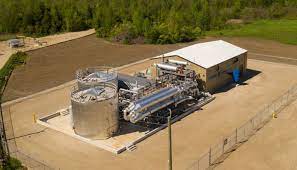
Breaking News
 Will the BRICS 'UNIT' really challenge the dollar?
Will the BRICS 'UNIT' really challenge the dollar?
 The U.S. Just Launched a Secret Dollar Empire (And Nobody Noticed)
The U.S. Just Launched a Secret Dollar Empire (And Nobody Noticed)
 ICE Uses a Growing Web of AI Services to Power Its Immigration Enforcement and Surveillance
ICE Uses a Growing Web of AI Services to Power Its Immigration Enforcement and Surveillance
Top Tech News
 EngineAI T800: Born to Disrupt! #EngineAI #robotics #newtechnology #newproduct
EngineAI T800: Born to Disrupt! #EngineAI #robotics #newtechnology #newproduct
 This Silicon Anode Breakthrough Could Mark A Turning Point For EV Batteries [Update]
This Silicon Anode Breakthrough Could Mark A Turning Point For EV Batteries [Update]
 Travel gadget promises to dry and iron your clothes – totally hands-free
Travel gadget promises to dry and iron your clothes – totally hands-free
 Perfect Aircrete, Kitchen Ingredients.
Perfect Aircrete, Kitchen Ingredients.
 Futuristic pixel-raising display lets you feel what's onscreen
Futuristic pixel-raising display lets you feel what's onscreen
 Cutting-Edge Facility Generates Pure Water and Hydrogen Fuel from Seawater for Mere Pennies
Cutting-Edge Facility Generates Pure Water and Hydrogen Fuel from Seawater for Mere Pennies
 This tiny dev board is packed with features for ambitious makers
This tiny dev board is packed with features for ambitious makers
 Scientists Discover Gel to Regrow Tooth Enamel
Scientists Discover Gel to Regrow Tooth Enamel
 Vitamin C and Dandelion Root Killing Cancer Cells -- as Former CDC Director Calls for COVID-19...
Vitamin C and Dandelion Root Killing Cancer Cells -- as Former CDC Director Calls for COVID-19...
 Galactic Brain: US firm plans space-based data centers, power grid to challenge China
Galactic Brain: US firm plans space-based data centers, power grid to challenge China
World's largest compressed air grid "batteries" will store up to 10GWh

As the world shifts towards renewable energy, grid-scale storage is becoming ever more crucial. Getting carbon emissions to net-zero will require a patchwork of technologies to smooth out unpredictable and inconvenient generation curves, with pumped hydro, huge lithium-ion batteries, tanks full of molten salt or silicon, thermal bricks, or heavy blocks stacked up in towers or suspended in mineshafts all in the mix.
Pumped hydro accounts for around 95 percent of the world's grid energy storage and gigwatt-capacity plants have been in operation since the 1980s. The problem is that you need a specific type of location and a staggering amount of concrete to build a pumped hydro plant, which works against the goal of reaching net zero. Rotting vegetation trapped in dams also contributes to greenhouse gas emissions. Meanwhile, the biggest mega-batteries built so far are only in the 200 MW/MWh range, though installations bigger than 1 GW are planned.

 The Lifespan of a Country
The Lifespan of a Country

